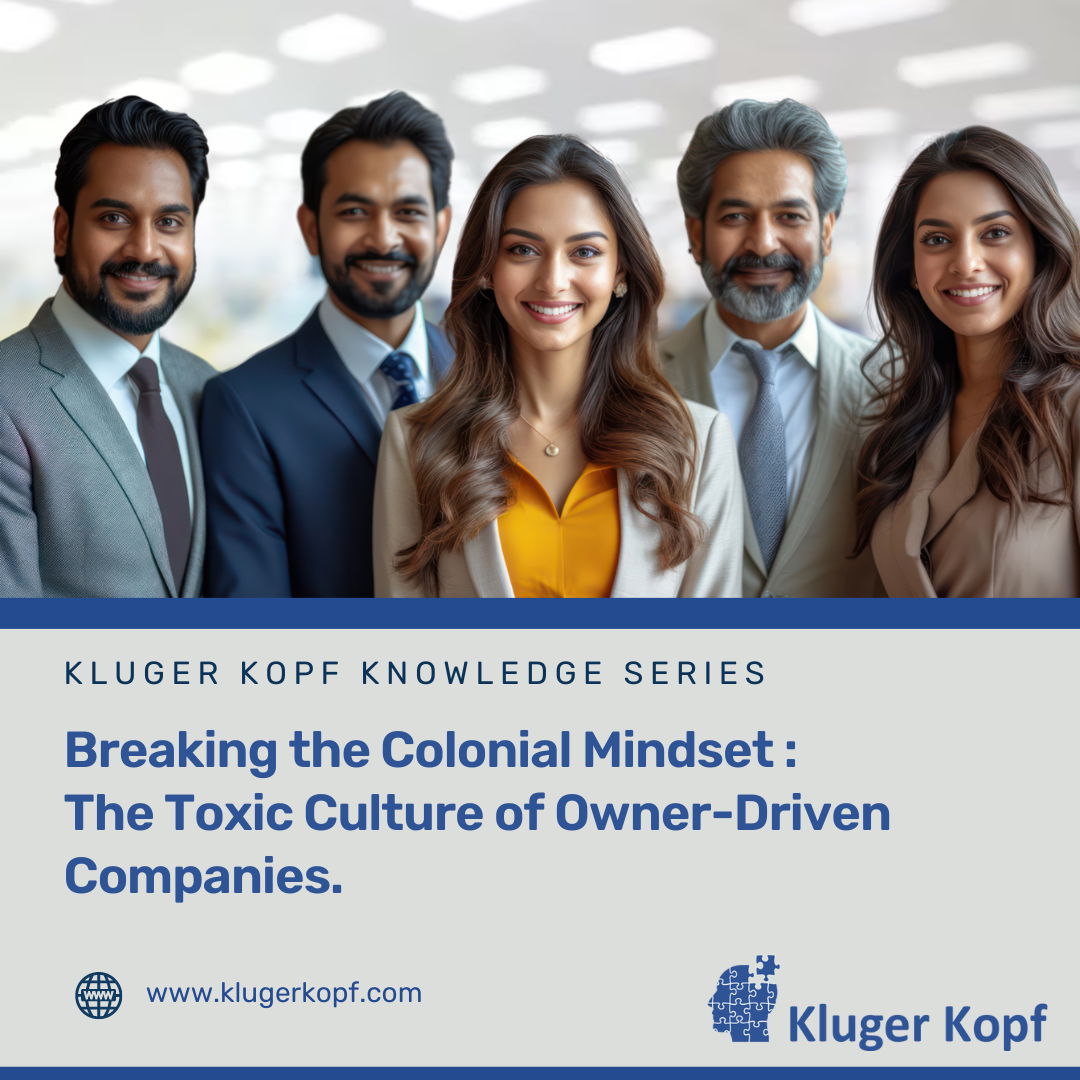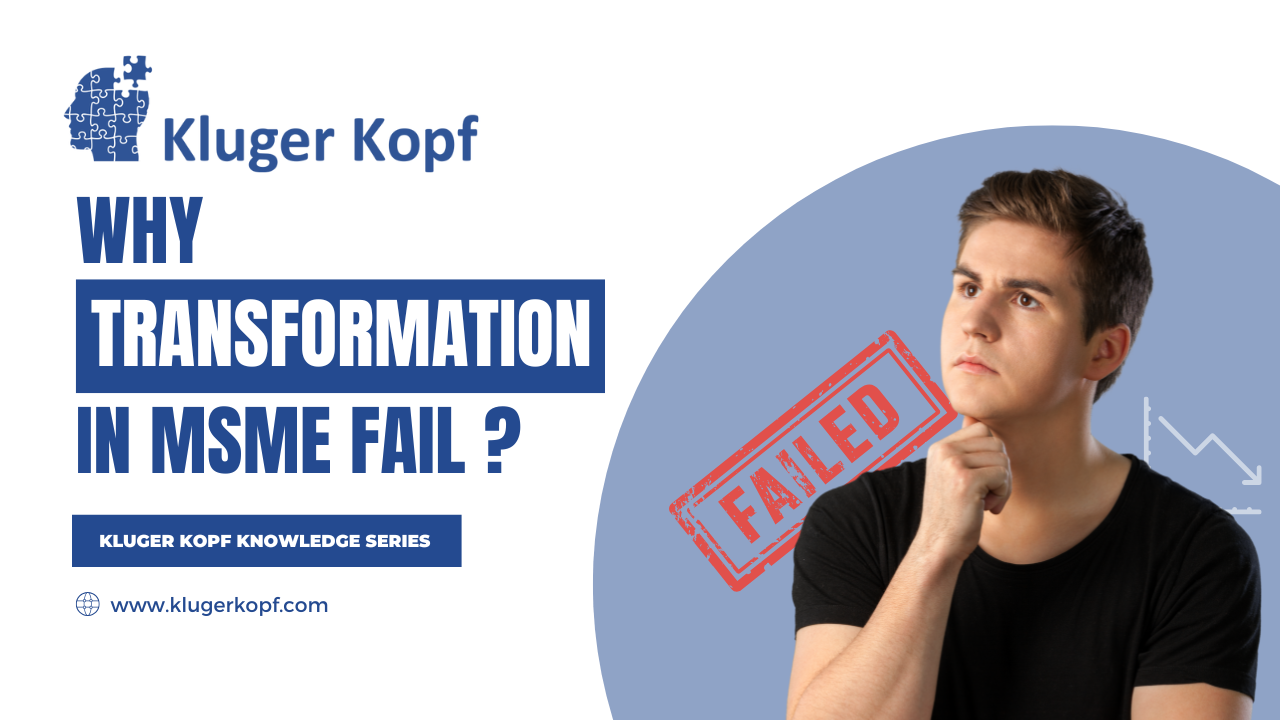Toxic Culture of Owner-Driven Companies and How to Transform It.
In many owner-driven companies, especially those that have deep roots in traditional industries, an unhealthy organizational culture often exists, shaped by a colonial-era mentality. This outdated mindset, characterized by a rigid, authoritarian approach to management, often treats the workforce as mere tools of production rather than valuable human capital. As companies evolve and the workforce becomes more empowered, this style of leadership breeds dissatisfaction, high turnover, and a lack of employee engagement.
The workforce of today seeks more than just financial compensation. People are looking for job satisfaction, personal gratification, and a sense of achievement. Gone are the days when employees worked merely for survival or felt indebted to their employer for their livelihood. It’s not slavery anymore, and organizations that fail to recognize this shift in mindset are bound to face long-term challenges in retention, productivity, and innovation.
The Colonial Attitude: A Relic of the Past
At the heart of this toxic culture is a deep-seated “colonial attitude” that owners and top leaders often carry. This manifests as:
- Top-down Decision Making: Leaders make unilateral decisions with little to no input from the workforce, treating employees as passive recipients rather than active contributors.
- Micromanagement: Employees are often micromanaged, with their autonomy stifled, leading to frustration and burnout. Every move is scrutinized, reducing trust between managers and their teams.
- Fear-Based Management: A focus on control through fear, often threatening job security or reprimands, keeps employees in line but kills creativity and initiative.
- Lack of Employee Recognition: Employees are treated as cogs in a machine, with little appreciation or recognition for their efforts. Their work is seen as a duty rather than a contribution worth celebrating.
- Transactional Relationships: The relationship between the employer and the employee is viewed as purely transactional, with employees feeling that they are only as good as the immediate value they provide. Personal growth and job fulfilment take a backseat.
The Workforce of Today: A Call for Purpose and Satisfaction
Modern employees, especially millennials and Gen Z, are not motivated solely by money. They seek meaning in their work. Satisfaction, recognition, and the opportunity to make a difference in their roles have become vital. The key drivers include:
- Job Satisfaction: Employees want to feel fulfilled in their work, knowing that their contributions matter.
- Personal and Professional Development: Workers today are eager to grow, not just within the organization but personally as well, expanding their skill sets and gaining new experiences.
- Sense of Purpose: A job is no longer just a paycheck; it’s about making a meaningful contribution, whether it’s to the company, the community, or society as a whole.
- Work-life Balance: Employees seek a healthy balance between their professional responsibilities and personal lives, expecting flexibility and understanding from employers.
Transforming a Toxic Culture: Pathways to Change
Owner-driven companies can change for the better by embracing a more inclusive, people-centric approach. Here are a few actionable strategies to foster a healthier and more productive culture:
- Shift to Participatory Leadership: Instead of enforcing a top-down approach, leaders should embrace participatory leadership, where decision-making involves the inputs and ideas of employees. This fosters a sense of ownership and accountability among the workforce.
- Empowerment through Autonomy: Trusting employees and giving them the freedom to work with autonomy can vastly improve job satisfaction. Autonomy fosters innovation and a sense of achievement.
- Promote Open Communication: An open-door policy where employees can express concerns, share ideas, and give feedback creates a culture of transparency. Leaders must be willing to listen, learn, and adapt.
- Recognize and Reward: Recognition goes a long way in boosting morale and motivation. Celebrating employee achievements—whether small or large—shows that their contributions are valued and appreciated.
- Focus on Employee Development: Investing in the personal and professional growth of employees is a long-term investment in the company’s future. Providing mentorship, training, and upskilling opportunities helps employees feel valued and committed to the organization.
- Redefine Company Values: Align the company’s mission and values with employee aspirations. This can create a shared purpose, one that employees can connect with on a personal level, leading to a stronger organizational commitment.
- Encourage Work-life Balance: Offering flexible work arrangements, respecting personal time, and promoting wellness are critical in building a positive work environment. Employees need to feel that their well-being matters just as much as their productivity.
- Foster Inclusivity and Diversity: Embracing diversity in the workplace, including diverse perspectives and backgrounds, can lead to a more dynamic and innovative environment. Inclusivity ensures that every employee feels valued, not just for their work, but for who they are.
The Future of Work Culture
Owner-driven companies with a colonial mindset are on the brink of obsolescence. The modern workforce has evolved, demanding more than just monetary compensation. They seek fulfilment, purpose, and a sense of belonging. The power dynamics of the past, rooted in fear and control, must give way to a more inclusive and empowering workplace culture. Organizations that recognize this shift and actively work toward change will retain talent and foster innovation, productivity, and long-term success.




5 thoughts on “Breaking the Colonial Mindset: The Toxic Culture”
I am very happy to read this. This is the type of manual that needs to be given and not the random misinformation that’s at the other blogs. Appreciate your sharing this best doc.
F*ckin¦ amazing issues here. I¦m very glad to peer your article. Thank you a lot and i’m having a look ahead to touch you. Will you kindly drop me a mail?